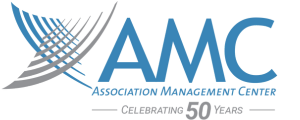
Data Analytics: An Imperative for Associations
Why Data Analytics?
Data helps associations better understand their members. We can use data to find efficiencies, lower expenses, validate trends, communicate effectively, and drive innovation.
Importantly, data can ground association governance in evidence-based decision-making.
While “Coviding” for the last 2.5 years, many of our association boards were challenged with making high-stakes decisions. First, they had to decide whether to cancel in-person conferences and meetings. Then they had to decide how to reduce expenses, either through program cuts, workforce reductions, or identification of alternative approaches.
And now, associations are faced with making decisions about the structure and location of meetings that also take into account social pressures, such as the racial reckoning since George Floyd’s murder, the rise of anti-Asian violence, restrictions on voting, and LGBTQ+ and reproductive rights, to name just a few.
Data can help associations inform all of these decisions.
To meet the challenges of the future, associations need a plan for how to identify their needs, collect data, and leverage technology to use their data. It’s likely the data needed is not found all in one place or even integrated. One way to make this process easier is to identify a partner who will focus on the technology piece while your association focuses on the strategy.
Start Lean
The landscape of technology and data has changed drastically. “I just finished a book written in 1996. It was funny to read the lengthy description of word processing, but we forget that it wasn’t that long ago when we didn’t have easy access to data,” shared Wendy-Jo Toyama, MBA CAE FASAE, CEO of the American Academy of Hospice and Palliative Medicine (AAHPM).
Presenting together at a recent conference, Toyama, and Association Management Center’s (AMC) Chief Information Officer Hans Zetterstrom, MSc, explained that while many associations incorporate analytics informally into their governance, operations, and decision-making, few are building formal data analytics programs.
But allocating resources and staff roles to data analytics is a step that AAHPM determined it needed to take. For context, AAHPM, a client partner of AMC, is a 5,500-member association of physicians and interdisciplinary practitioners with a budget of around $7 million. Early in the pandemic, we created a data analytics manager position to identify efficiencies and data needs. At the time, AAHPM had several open positions, but instead of immediately filling them, we first conducted a team skills assessment and gap analysis. From that, we worked with AMC’s HR team to develop a functional staffing chart in place of a traditional organizational chart. The need for a data analytics role that worked across functional areas was a key finding from this process and led to Kelly McKenna, MA, joining our team in late 2021.
Not every organization can devote significant resources to data analysis, which is why Zetterstrom promotes a lean approach. “Exceptional boards make data-based decisions, and association management companies need to consider how to help their clients make sense of their data. Data analytics projects can be costly for associations to afford alone; management companies, like AMC, can access economies of scale across multiple clients to offer cost-effective solutions,” said Zetterstrom. AMC plans continued growth in this area in the future.
How to Begin a Data Analytics Program
Frameworks are valuable when solving complex challenges. AAHPM adapted a framework based on Google’s approach as described in a LinkedIn article by Gert Lõhmus. Although presented sequentially, it is iterative and involves revisiting phases. This framework is applicable to large and small projects, and it is important at each step to examine if you are creating or reinforcing bias.
- Ask: Define the question(s) you want to answer or the problem(s) you want to solve.
- Prepare: Identify sources to answer your questions or solve your problems. Identify missing data and create a collection plan. Identify stakeholders and their expectations. Agree on a plan.
- Clean: Ensure data is error free, collected in a consistent manner, and complete. This phase will be ongoing.
- Analyze: Analyze data to answer the questions or solve the problems you identified during your Ask phase.
- Share: Share findings and recommendations with stakeholders.
- Act: Implement data-driven decisions.
Case Study: AAHPM Ask and Prepare Phases
AAHPM is working diligently on the Ask and Prepare phases.
Many of us are guilty of jumping into projects, programs, events, surveys, etc., without first defining what we want to accomplish. That’s why the Ask phase is so important. Devoting resources to defining the questions you want to answer or problems you want to solve can save time, money, and frustration.
AAHPM devoted 6 months to the Ask phase and used this time to conduct semi-structured interviews with all of our staff to uncover opportunities for innovation, identify challenges, set goals, and determine data needs. From this work, five themes emerged as opportunities. One theme, which is potentially universal to all associations, is the need to better understand our members.
For goal setting, we’ve developed SMART goals as the basis of our operational plan and dashboards, and to inform our staff performance reviews. We’re approaching this work through four meetings per functional staff team. During the first meeting, connections are mapped between AAHPM’s strategic plan, operational plan, staff actions, and related member behaviors, resulting in a list of potential areas for measurement. During the second meeting, the list is narrowed to three to seven measurement areas per functional staff team. We prioritize (high, medium, low) each measurement and assess feasibility (easy, medium, stretch, not currently possible). Meetings three and four focus on refining measurement areas into SMART goals (for this we adapted a template created by the University of California).
Using what we learned in the Ask Phase, we defined objectives and moved into the Prepare Phase, which focused on collecting data to support our goals, including reviewing current data collection and exploring future efforts. Key to ensuring success and support, AAHPM created a staff-led data strategy task force that included members across all functional areas. The task force began by reviewing current data elements (keep, edit, remove) in our association management system (AMS). The task force then generated a list of missing data elements that fell into two buckets.
- Elements we want to know about each member and therefore are appropriate to add to the AMS.
- Elements we want to know about the membership in general, which are appropriate to collect in periodic surveys.
During all phases, it is critical to partner effectively with key stakeholders. Technology is a big piece of the puzzle. At the onset, we established monthly conversations with AMC’s IT team to create a thought partnership. We began by sharing the context of data at AAHPM, an ideal future state, and our framework. We followed that by consistently asking for their feedback. By engaging the IT team early and often, we were able to leverage this partnership to imagine better solutions for everyone.
“Data-driven decision-making has the power to transform the way associations drive value for their constituents and identify market/engagement opportunities, and will help associations prioritize adoption of a data strategy scaled toward long-term success. AAHPM's approach to data analytics incorporates three key pillars of a successful analytics strategy: people, process, and technology. We're grateful to collaborate with AAHPM on this crucial initiative, ” said Miranda Walker, AMC Director of IT Product Management.
Key Pearls of Wisdom We’ve Learned Along the Way
Always prioritize ethics.
Data has many ethical considerations and pitfalls. Our objective is to create insights that are helpful not harmful. We must ensure that we are not reinforcing bias or incentivizing unethical staff or member behavior. Member safety and privacy must be prioritized.
Involve stakeholders from all levels of the association.
Including team members across the association provides nuance and depth to the information you gather and creates opportunities to build engagement.
Demonstrations are more helpful than verbal descriptions.
When communicating complex processes, actual demonstrations help. We demonstrated processes for the IT team to illustrate challenges.
Partnerships are key.
Analytics work is complex and cannot happen in isolation. To be successful, you need partnerships across teams. Support and expertise from AMC service teams will continue to be imperative.
We plan to continue to partner with AMC in their efforts to break down data silos and develop a multi-phased lean approach to the collection, transformation, and storage of data to support effective decisions.
Surmounting the Challenges of the Future
Ready to dive into data? You don’t need to reinvent the wheel. Start with existing frameworks, identify and engage stakeholders, build trusted partnerships, and be thoughtful about your intentions. Remember that Rome wasn’t built in a day!
Wendy-Jo Toyama, MBA CAE FASAE, is CEO of AAHPM, a client partner of AMC.
Kelly McKenna, MA, is a Data Analytics Manager for AAHPM, a client partner of AMC.
Be the first to know about the latest articles, news, and events from AMC. Sign up for our emails!


